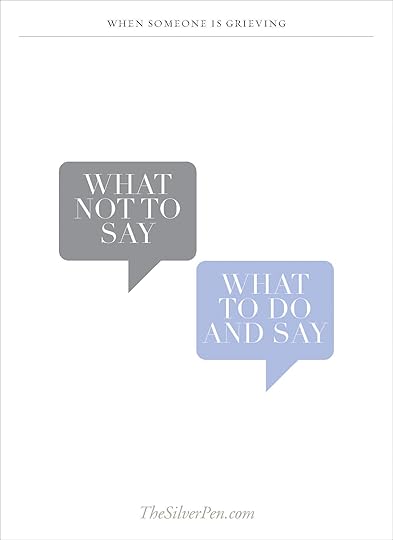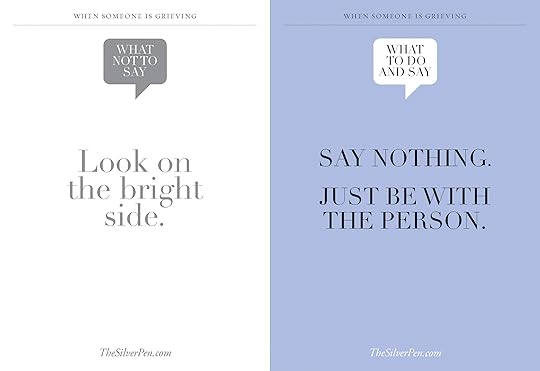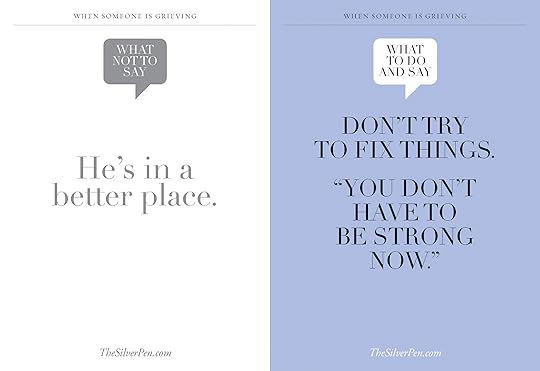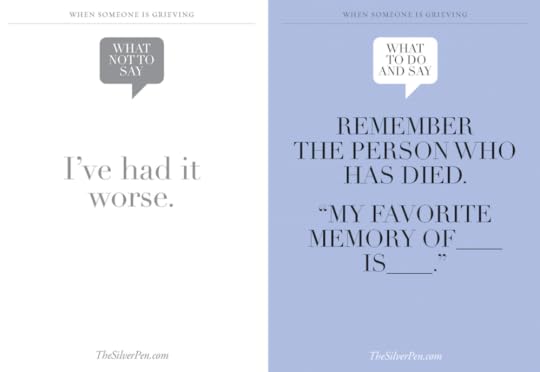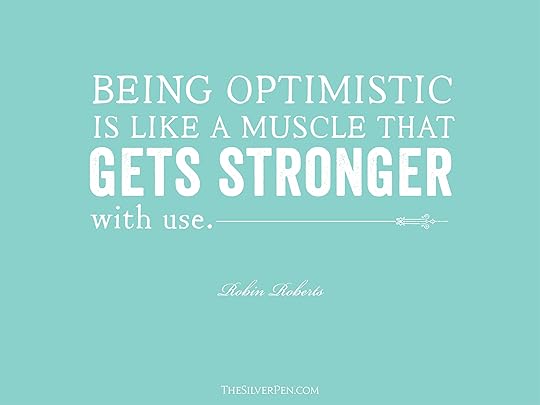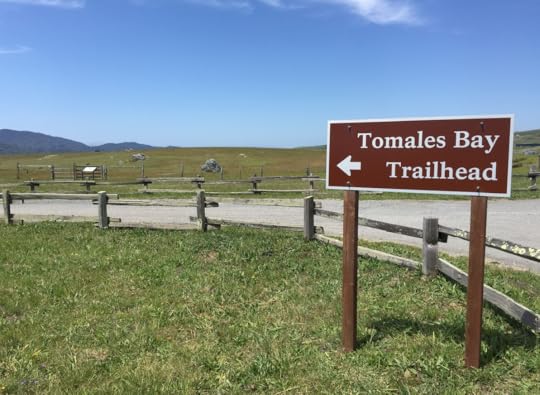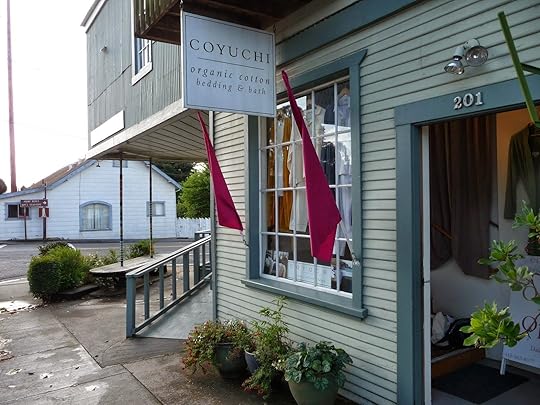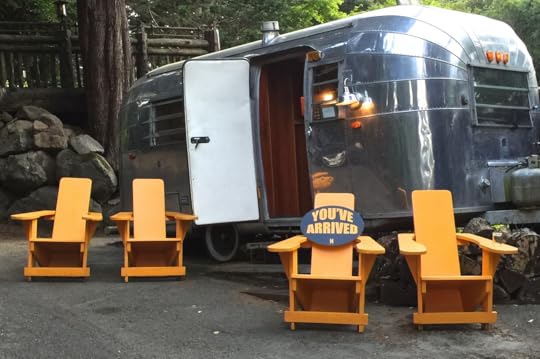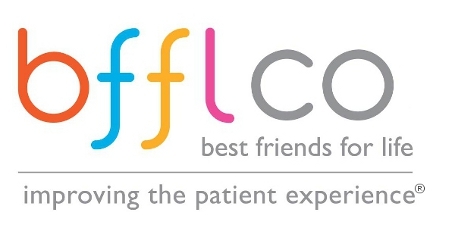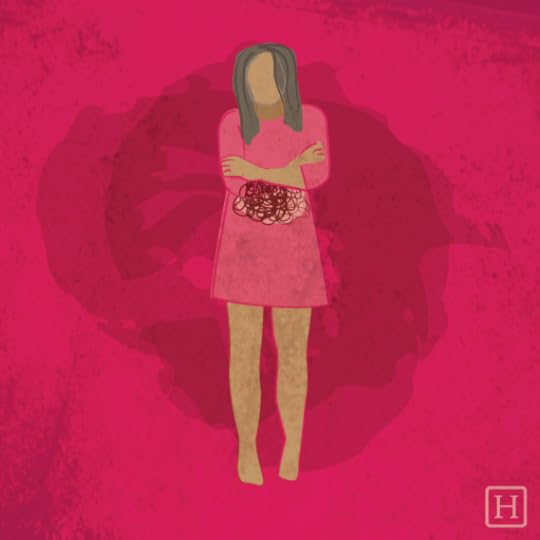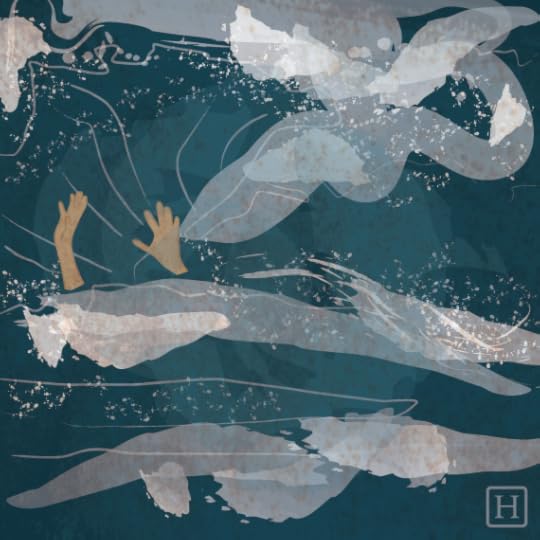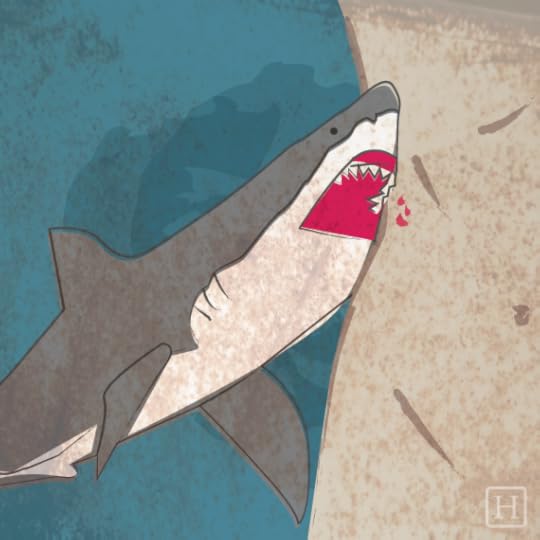Hollye Jacobs's Blog, page 2
June 21, 2015
Notes to My Daughter
 This is the first summer that my Baby Girl (who is now NINE!) is going to overnight, sleep away camp. You all met her shortly after my FBC diagnosis, when she was a wee one, just 4 3/4. I am astounded by how quickly time has passed. I know that we all say it. But really. There are days when I can still hardly even believe that I am actually a mother, not to mention the fact that she is NINE and going AWAY for three whole weeks! Wowsy bowsy.
This is the first summer that my Baby Girl (who is now NINE!) is going to overnight, sleep away camp. You all met her shortly after my FBC diagnosis, when she was a wee one, just 4 3/4. I am astounded by how quickly time has passed. I know that we all say it. But really. There are days when I can still hardly even believe that I am actually a mother, not to mention the fact that she is NINE and going AWAY for three whole weeks! Wowsy bowsy.
The truth of the matter, however, is that I am completely psyched for her. She is an independent, strong-willed, curious and joyous girl who is ready to spread her wings. Further, I’m ready to not only let her, but watch her soar.
On the eve of her departure, I am writing a letter to her and including (among other things) these 10 notes:
Live in the moment. Don’t let life pass by in a blur, drive your own destiny and achievements. Make them your own.
Laugh. Laugh long and often and be sure to live your life with someone who can share in that laughter.
Value friendships. Nurture them for they are what sustain us and make us the best version of ourselves.
Trust your instincts. Listen to those inner thoughts for guidance.
Be generous. Generosity of thought and of action will pay back.
Be appreciative. Notice the advantages that come your way; be gracious and grateful. Never forget the power of thank you.
Don’t be afraid to say sorry. Accept that we can’t get it all right, all of the time.
Positivity in the face of adversity. The positive will come out of a setback. Look for the silver lining, it is invariably there.
Be true to yourself. Never care what others think of you, it is what you think about them that counts.
Be committed, be engaged. Believe in yourself and the rest will follow. Fear is unproductive and promotes failure.
Happy Summer!
* Photography by dear Elizabeth Messina
The post Notes to My Daughter appeared first on The Silver Pen.
Creativity
June 20, 2015
Rules To Live By

Rules To Live By
Recently, my sweet friend Mark D. Sikes wrote about the design advice of Bunny Williams and John Rosselli that is found in the latest issue of House Beautiful. I’m a big believer in sharing joy, advice, and just plain goodness in the world, so I thought that I would pass on these words of entertaining wisdom to you! As Mark said, Bunny Williams and John Rosselli are known as the “first couple” of decoration. As husband and wife, they call themselves “bookends” because they both love gardening, dogs, houses, collecting, and they especially love people. Love that! Love them!
Here are their 8 must-live-by style rules that we should all obey:

RULE 1: Offer hospitality, not just a drink
“Show, don’t tell, what you’re serving with a well-appointed bar. Guests feel more home when they can help themselves.” -Bunny Williams

RULE 4: Read, share, repeat
“But seconhand books by the bundle so that guest can hang on to the stories they begin, even when it’s time to go.” -Bunny Williams

RULE 5: Don’t be precious about special things.
“Use and enjoy your antiques and unique finds, especially in a utilitarian room like the bathroom. Keep cotton swabs in a hand-painted tin or sea-grass box; hang art that can survive a splash.” —Bunny Williams

RULE 7: Don’t wait to live well
“John and I used to entertain guests even when we had tiny apartments without room for a dining table. The point is: Don’t put off enjoying your home and friends — today there are so many ways to live well without breaking the budget.” -Bunny Williams

RULE 8: Your home begins as soon as you step out of the car
“It’s not just the inside of your house that deserves stylish touches. Celebrate your arrival by rolling out the red carpet for yourself — or at least a pair of oversized planters.” -Bunny Williams
The post Rules To Live By appeared first on The Silver Pen.
June 14, 2015
When Someone is Grieving What to Say
When Someone is Grieving What to Say
We have experienced a lot of death this year. Some loved ones have died suddenly and others have died after a prolonged illness. Ugh. Sadness, confusion, anxiety, emptiness…just a few of the many feelings that come with grief and bereavement.
It occurred to me that – just as when illness strikes – many people don’t know what to say or do when someone dies. So, after having been a hospice nurse for over 10 years and also experiencing the death of friends and family, I’ve come up with a few recommendations for what to do for and say to someone who has experienced death. I hope that this helps, if even just a wee bit.
The post When Someone is Grieving What to Say appeared first on The Silver Pen.
Optimism
June 11, 2015
Letter To My Patients
 No, this isn’t a letter from me. It is a super powerful and incredibly poignant letter written by a medical student to his patients. Hope that wasn’t confusing. I was kinda – not kinda, truly – blown away by it and had to share with you. Having been the person on both sides of the bed (as a health care professional AND as a patient), I completely and totally GET IT! Thought you might enjoy this incredible insight and, well, gift.
No, this isn’t a letter from me. It is a super powerful and incredibly poignant letter written by a medical student to his patients. Hope that wasn’t confusing. I was kinda – not kinda, truly – blown away by it and had to share with you. Having been the person on both sides of the bed (as a health care professional AND as a patient), I completely and totally GET IT! Thought you might enjoy this incredible insight and, well, gift.
Letter To My Patients: An Apology & Thank You
“As a third-year medical student, I realized one particular morning on rounds that I had let the demands of the job overtake the joys of why I went into medicine at all. I found myself running behind my team, barely even able to say goodbye to the last patient we had seen. The human interaction had become an afterthought in the checklist of things we needed to get done for the day, a truly sad reality of modern American health care. And so, before I tumble down another hallway behind a herd of stampeding physicians, I want to unburden myself of a few thoughts.
To all of my patients — past, present, and future:
I apologize. I am sorry for the early mornings that I have awoken you, hours before breakfast arrives, or daylight can brighten your quiet room. For the many days where you don’t get to ask all of your questions as our team rushes in and out, trying to complete our tasks before the next conference or operation or presentation — for those days, I am sorry. I am sorry for the visits where we seem more focused on your vital signs and lab results than on you — you are more than a set of numbers trending up and down, more than x-ray reads and BMPs. I know, although I may not always remember, that you wait for hours for those few minutes that you have our attention. And thus, for the times you felt like we weren’t listening, weren’t understanding, were not being the doctors we took oath to be — on behalf of us all, I am so sorry.
I am sorry, my patients, for any time where you were not treated with respect, whether by me, by your residents or your attending, by your nurses or your technicians, or anyone who has made your illness even more challenging.
I am sorry for the cases for which we didn’t have the answer — the answer to when you would go home, to how many years you would have left, to when the pain would stop — trust me when I say, we too wish we knew. To you, my dear patients, I am sorry for the nights that your family stayed awake, worrying, hoping, waiting, for I know that you too bore the burden of their hurt, in addition to your own. I am sorry for the days I was not there — when I left the hospital, able to enjoy a warm sun or the comfort of my own bed, when you remained behind — because you, unlike me, have no days off.
And lastly, I am sorry for the times that we may have failed to cure you, for medicine is far from a perfect science, but I am more sorry, my patients, for the times that we failed to heal. Please, forgive me.
I want to say to you as well: Thank you. Thank you for teaching me the value of patience — I will remember you if and when I am also one day a patient. Thank you for showing me the joys of the little things in the hospital — the moments that we laughed together, despite all that you faced; the power of a single hug, a human embrace that no disease can overcome; for I am starting to learn that these are indeed the big things in life.
Because of you, every day that I wake up has a calling, for I know that another life awaits me — thank you for this immense privilege. Thank you, my patients, for teaching me the meaning of love, as I see your families never complain, never longing for the world outside — their world lies in a bed in front of them. I thank you for the trust you put in me from the day that we first meet until our final goodbyes. And thank you, my patients, for never giving up on the will to live until the time has come, and for accepting it when it does.
Know that you have taught and inspired me more than you may think.”
Abraar Karan is a medical student who blogs at Swasthya Mundial. He can be reached on Twitter @AbraarKaran.
The post Letter To My Patients appeared first on The Silver Pen.
June 10, 2015
Travel to West Marin
If you follow me on Instagram, you’ll know that last month, I had a runaway weekend in West Marin County. When I say runaway, I mean run.away. Despite the fact that I tend to present myself as a living out loud kind of person, I am an introvert at heart. I love love love alone time. I polled some of my friends – kindred spirits – and was guided to the magic of West Marin. Located about an hour and a half north of San Francisco – accessed by a beaaaaaautiful drive along the California coastline on Highway 1! – Marin was the perfect place to rest and restore my weary heart and mind.
I stayed at Manka’s Iverness Lodge. It couldn’t have been better. The rustic, quiet, and peaceful environment was exactly what I needed! Each morning, breakfast was delivered – with a New York Times! – in a little box, complete with a vegan and gluten free muffin and granola with fruit. It was yummalicioius. Oh and the best part: the pitter-patter to my door didn’t happen until the ungodly (or perhaps completely godly!) hour of 9:00 am.


The weekend was spent eating, hiking, reading and sleeping, all of which = Silver Linings all around! Here are a few of my favorite things that I did when I was there:
Dinner at Sir & Star, opened by the Mankas people.

Oysters at Hog Island Oyster. The BBQ oysters are IN.SANE. Oh, if you’re not a singleton (like I was), be sure to make a reservation!

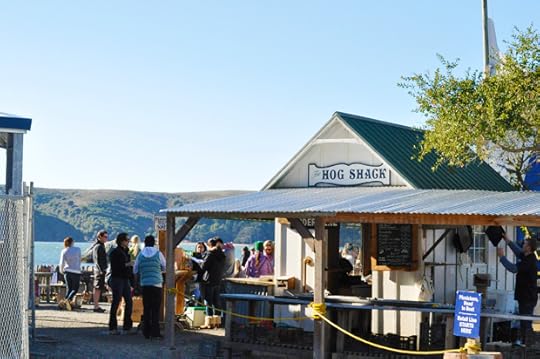
Saturday afternoon grilled cheese at the Pt Reyes farmers’ market is delish and super charming.
Picnic lunch from Cowgirl Creamery + hike out to the Elk Point (or any hike, really). Buy a bottle of Sean Thackrey wine from the little nook, or a Navarro. I actually didn’t do this because I was by myself. And driving. And healthy this weekend.
Waking up with a morning walk in the National Forest was the Silver Lining of each morning!
Shopping for sheets upstairs at the Coyuchi Linens outlet. Always a key stop.
I went to a Writer’s Workshop at my all-time favorite Bookstore called Book Passage where my all-time favorite writer, Anne Lamott gave a talk. It was A.MA.ZING. She is everything I hoped she would be: smart, witty, funny, irreverent and vulnerable. And yes, I was the geeky girl who whipped out my phone and took a photo of her. 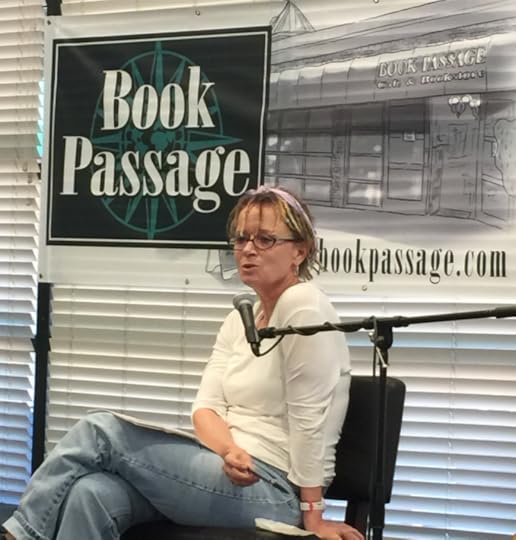
This weekend, I reminded myself that down-time is the most uplifting thing that we can give to and do for ourselves, whether it is traveling and getting out of our environment altogether or just a good old fashioned pajama day. I hope that you will do the same for yourself.
The post Travel to West Marin appeared first on The Silver Pen.
June 9, 2015
Hitting the Reset Button in Your Brain
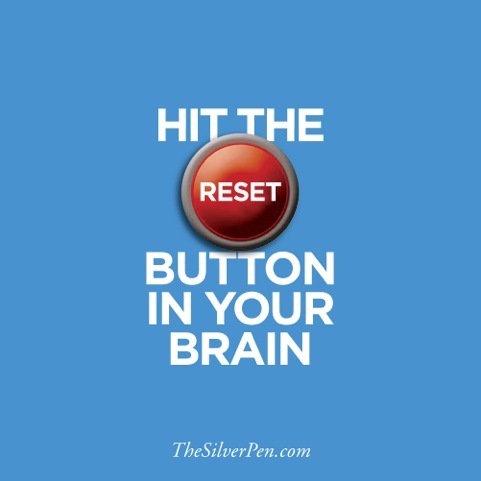 As I am packing for our MUCH-NEEDED vacation, I am reminded of an article that I read last year in the New York Times by Daniel J. Levitin. It is truly a MUST (re)READ. I hope that you enjoy it as much as I am. In fact, I am printing the article and taking it with me to read and reread and reread – especially when I am tempted to read emails and/or work.
As I am packing for our MUCH-NEEDED vacation, I am reminded of an article that I read last year in the New York Times by Daniel J. Levitin. It is truly a MUST (re)READ. I hope that you enjoy it as much as I am. In fact, I am printing the article and taking it with me to read and reread and reread – especially when I am tempted to read emails and/or work.
Hit the Reset Button in Your Brain
This month, many Americans will take time off from work to go on vacation, catch up on household projects and simply be with family and friends. And many of us will feel guilty for doing so. We will worry about all of the emails piling up at work, and in many cases continue to compulsively check email during our precious time off.
But beware the false break. Make sure you have a real one. The summer vacation is more than a quaint tradition. Along with family time, mealtime and weekends, it is an important way that we can make the most of our beautiful brains.
Every day we’re assaulted with facts, pseudofacts, news feeds and jibber-jabber, coming from all directions. According to a 2011 study, on a typical day, we take in the equivalent of about 174 newspapers’ worth of information, five times as much as we did in 1986. As the world’s 21,274 television stations produce some 85,000 hours of original programming every day (by 2003 figures), we watch an average of five hours of television per day. For every hour of YouTube video you watch, there are 5,999 hours of new video just posted!
If you’re feeling overwhelmed, there’s a reason: The processing capacity of the conscious mind is limited. This is a result of how the brain’s attentional system evolved. Our brains have two dominant modes of attention: the task-positive network and the task-negative network (they’re called networks because they comprise distributed networks of neurons, like electrical circuits within the brain). The task-positive network is active when you’re actively engaged in a task, focused on it, and undistracted; neuroscientists have taken to calling it the central executive. The task-negative network is active when your mind is wandering; this is the daydreaming mode. These two attentional networks operate like a seesaw in the brain: when one is active the other is not.
This two-part attentional system is one of the crowning achievements of the human brain, and the focus it enables allowed us to harness fire, build the pyramids, discover penicillin and decode the entire human genome. Those projects required some plain old-fashioned stick-to-itiveness.
But the insight that led to them probably came from the daydreaming mode. This brain state, marked by the flow of connections among disparate ideas and thoughts, is responsible for our moments of greatest creativity and insight, when we’re able to solve problems that previously seemed unsolvable. You might be going for a walk or grocery shopping or doing something that doesn’t require sustained attention and suddenly — boom — the answer to a problem that had been vexing you suddenly appears. This is the mind-wandering mode, making connections among things that we didn’t previously see as connected.
A third component of the attentional system, the attentional filter, helps to orient our attention, to tell us what to pay attention to and what we can safely ignore. This undoubtedly evolved to alert us to predators and other dangerous situations. The constant flow of information from Twitter, Facebook, Vine, Instagram, text messages and the like engages that system, and we find ourselves not sustaining attention on any one thing for very long — the curse of the information age.
My collaborator Vinod Menon, a professor of neuroscience at Stanford, and I showed that the switch between daydreaming and attention is controlled in a part of the brain called the insula, an important structure about an inch or so beneath the surface of the top of your skull. Switching between two external objects involves the temporal-parietal junction. If the relationship between the central executive system and the mind-wandering system is like a seesaw, then the insula — the attentional switch — is like an adult holding one side down so that the other stays up in the air. The efficacy of this switch varies from person to person, in some functioning smoothly, in others rather rusty. But switch it does, and if it is called upon to switch too often, we feel tired and a bit dizzy, as though we were seesawing too rapidly.
Every status update you read on Facebook, every tweet or text message you get from a friend, is competing for resources in your brain with important things like whether to put your savings in stocks or bonds, where you left your passport or how best to reconcile with a close friend you just had an argument with.
If you want to be more productive and creative, and to have more energy, the science dictates that you should partition your day into project periods. Your social networking should be done during a designated time, not as constant interruptions to your day.
Email, too, should be done at designated times. An email that you know is sitting there, unread, may sap attentional resources as your brain keeps thinking about it, distracting you from what you’re doing. What might be in it? Who’s it from? Is it good news or bad news? It’s better to leave your email program off than to hear that constant ping and know that you’re ignoring messages.
Increasing creativity will happen naturally as we tame the multitasking and immerse ourselves in a single task for sustained periods of, say, 30 to 50 minutes. Several studies have shown that a walk in nature or listening to music can trigger the mind-wandering mode. This acts as a neural reset button, and provides much needed perspective on what you’re doing.
Daydreaming leads to creativity, and creative activities teach us agency, the ability to change the world, to mold it to our liking, to have a positive effect on our environment. Music, for example, turns out to be an effective method for improving attention, building up self-confidence, social skills and a sense of engagement.
This radical idea — that problem solving might take some time and doesn’t always have to be accomplished immediately — could have profound effects on decision making and even on our economy. Consider this: By some estimates, preventable medical error is the third leading cause of death in the United States, accounting for hundreds of thousands of deaths each year. You want your diagnostician to give the right answer, not always the quickest one. Zoning out is not always bad. You don’t want your airline pilot or air traffic controller to do it while they’re on the job, but you do want them to have opportunities to reset — this is why air traffic control and other high-attention jobs typically require frequent breaks. Several studies have shown that people who work overtime reach a point of diminishing returns.
Taking breaks is biologically restorative. Naps are even better. In several studies, a nap of even 10 minutes improved cognitive function and vigor, and decreased sleepiness and fatigue. If we can train ourselves to take regular vacations — true vacations without work — and to set aside time for naps and contemplation, we will be in a more powerful position to start solving some of the world’s big problems. And to be happier and well rested while we’re doing it.
Daniel J. Levitin is the director of the Laboratory for Music, Cognition and Expertise at McGill University and the author of “The Organized Mind: Thinking Straight in the Age of Information Overload.”
The post Hitting the Reset Button in Your Brain appeared first on The Silver Pen.
BFFL Co.
As many of you already know, sharing tips with friends is one of my favorite things to do. One company that I have been meaning to tell you about is BFFL Co.
BFFL stands for “Best Friends for Life”. Isn’t that the cutest name? Well, it’s a cute name with a very real and important purpose. Introduced to me by a girlfriend (isn’t that how we find out about all the great things in life?), I am excited to share it with you!
BFFL Co. (“Best Friends for Life”) provides information, support and a wide range of products that help patients recover from surgery and other medical treatments in comfort and with dignity. I so completely and totally wish that this company had been around when I had my surgery in 2010! The Silver Lining is that it now exists for you and your loved ones!
Here’s a little background: BFFL Co was founded in 2011 by Elizabeth Chabner Thompson, MD, MPH (Master’s in Public Health). Elizabeth is a radiation oncologist who trained at Johns Hopkins University School of Medicine and the Harvard Hospital Systems. Clearly she is a smartie with a big heart!
After many years of working as a clinician, and after undergoing surgery herself, Elizabeth realized that people who become patients need to feel cared for, comfortable, and empowered, and they need to be treated in a way that preserves their dignity. She felt that while the surgeries and treatments for cancer and other conditions have rapidly evolved (and, in some cases, even been revolutionized), the recovery tools currently available to patients were designed decades ago, for the surgeries and treatments of the past. I couldn’t.agree.more!
BFFLBags® are super unique and awesome recovery kits packed with essential medical, personal care and other things that people need to get through all kinds of medical procedures and surgeries, e.g., lumpectomy, mastectomy, chemo (for women AND men!) and even child birth. I am seriously crazy about these gift bags.
They are the perfect gift. After all, we all wonder what to do and say when a person is diagnosed and faces treatment. Giving this gift bag will pretty much ensure adding a Silver Lining to a person’s life!
Now you know that even though this sounds like an ad, it certainly isn’t. I don’t get paid to endorse things that I love. When I love something, I love love love it and have to share share share it!
Here are my two favorite gifts:
Pink Quilted Tote Breast BFFLBag® (http://bfflco.com/product/limited-edition-breast-bfflbag/) — This bright pink quilted designer zip tote packed with everything needed for surgical recovery, including: a specially-designed axillapilla® comfort pillow; wound and drain care supplies; mybody® skin care gift pack; toiletries, organizing tools and instructions; KIND bar; and more. Stylish and lightweight, this bag will keep spirits high during recovery and help the transition back to active life as a gym bag, shopping tote, or laptop case! Each bag comes carefully wrapped in tissue and accompanied by a handwritten note card, and BFFL Co will donate 15% of net proceeds to Friends Fighting Breast Cancer.
The Elizabeth Pink Surgical Bra® (http://bfflco.com/product/elizabeth-surgical-bra/) — This bra is not only extremely soft and comfortable (made of durable brushed-back material), but also expertly designed to eliminate the pinching and pain usually associated with drains and ill fitting garments put on patients after breast surgery. The patent-pending bra features side drain openings, soft Velcro front closures and shoulder releases so that removal for wound care and laundering are virtually effortless. Recovery is hard, and this beautiful bra will definitely be a patient’s best friend!
Visit www.bfflco.com to see other products and a wealth of helpful information.
The post BFFL Co. appeared first on The Silver Pen.
June 8, 2015
What Stress Physically Feels Like
What Stress Physically Feels Like
Lordy-bee. WTF is going on with stress lately? It is EVERY.WHERE. Are you all feeling it? One of my friends eloquently uses the hashtags: #stuck and #burnedout. I would add #stressedbeyondbeliefwithnopatienceleft. Yea, things that overwhelming these days. The Silver Lining is that #hashtag creation cracks me up and there is nothing like a giggle to help balance stress and anxiety! Oh and the other big Silver Lining is that I no longer have chemo appointments in my calendar. So there.
Anyhoo, recently I came across a powerful and super visual description of what stress physically feels (and looks!) like. These struck such a chord with me. How about you?
“Like a huge knot in my stomach.”
“It feels like being caught in a stunami; the rolling of the wave keeps you from figuring out which direction to swim.”
“I feel like a shark bit me in the stomach.”
“For me stress is like a hazy fog that is so thick that it literally slows me down.”
“It feels like the walls are closing in. A vice grip on my body.”
“A volcanic mountain close to eruption with lots of pressure building up. Everything is amplified around me. “
“Stress feels like carrying around a mental cinderblock. You can hold it for a few minutes and not get tired of (an actual cinderblock weighs 28 pounds) but if you carry it around for an hour it will fatigue you, carry it around for a day it will hurt you, continue to carry it long term and it can literally kill you.”
“I feel like I am an Egyptian mummy wrapped all over and the pyramid is put on top of me.”
“It feels like a weight on my shoulders, gravity pulling me down and a sense of dread.”
“Stress is like being hugged by a giant.”
What does stress physically feel like to you?
The post What Stress Physically Feels Like appeared first on The Silver Pen.


